We all have been waiting for the future of work to come, and it came faster than expected. The current pandemic is completely reshaping the way we do our jobs and communicate with our colleagues.
In this blog, you will learn more about the main factors that are accelerating the future of work as well as how to adapt to the new way of working.
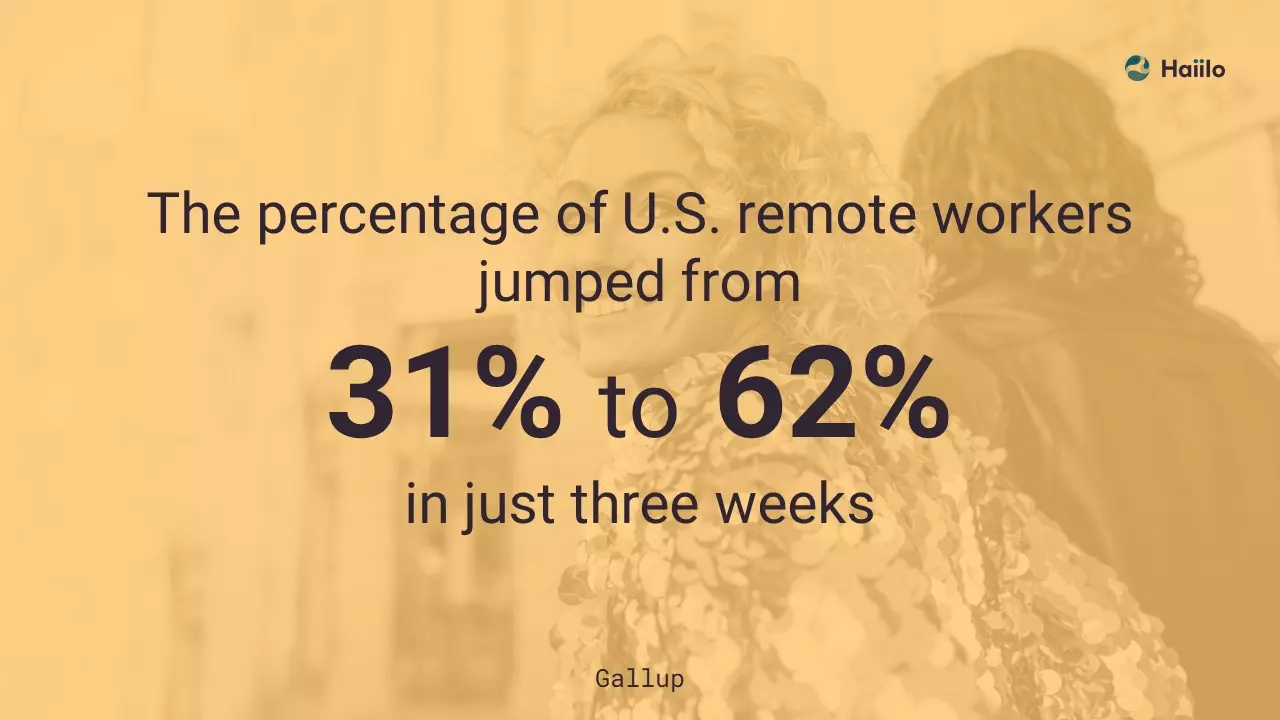
What We Mean by the “Future of Work”
An enormous amount of research about the future of work has been emerging in the business world. Employers across the world are trying to predict how the future of work may look like and how they can adapt to it.
Indeed, the labor market is likely to undergo major transformations in the next years and decades. However, despite the popularity of this topic, there is still no universally accepted definition of what exactly the “future of work” encompasses and what the most relevant drivers are.
In general, businesses are trying to better understand how the emergence of technology and globalization will impact the way their employees work, how it will reshape Human Capital Management, and what impact the changes will have on how companies operate.
Future-proof your organization by implementing the right IC technology!
The Accelerated Shift Towards the Future of Work
Just a few months ago, everyone was talking about how the future of work will be completely digital. Today, digital is the new normal for organizations across the globe that were forced to completely transform and digitalize their business processes.
The pandemic has had an enormous impact on online working environments and, therefore, promoted a faster shift towards the future of work.
Moreover, some experts believe that the world of work will never be the same. The coronavirus has fundamentally changed every aspect of business — from eliminating our commute to work to how we interact and collaborate with our colleagues.
Research from the Society for Human Resource Management (SHRM) found that 71% of employers are struggling to adjust to remote work, 65% say maintaining employee morale has been a challenge, and more than a third are facing difficulties with company culture.
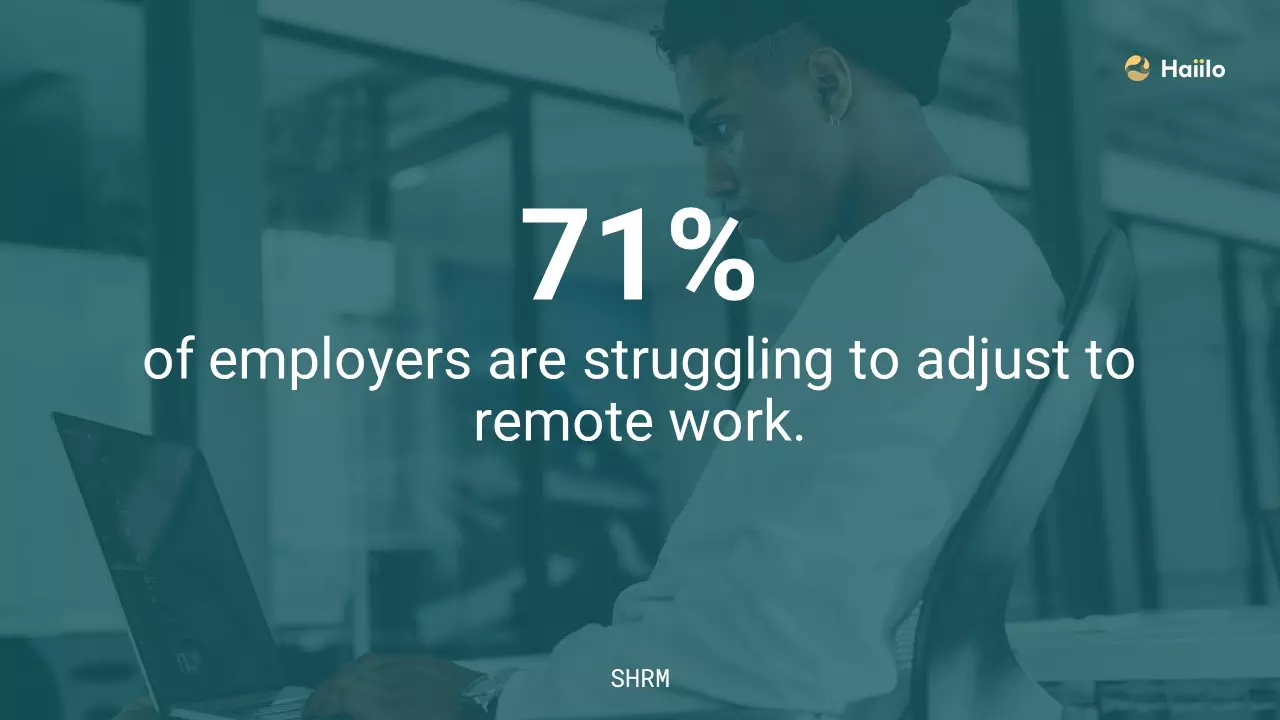
14 Trends That Are Currently Impacting the Future of Work
Even though we didn’t expect the future of work to come so quickly, the shift to remote work and the emergence of virtual workplaces is forcing us to adapt to these changes.
For employers that decide to keep their centralized workspaces, the office of tomorrow will be designed to keep people connected while they are physically apart. We are expecting to see the rise of virtual work spaces in order to enable employees for success and keep their productivity levels high.
Let’s now take a look into some emerging trends that have brought what we used to call the future of work faster than expected.
1. Remote work as the new normal way of working
You may remember the saying: “The future of work is remote!” It is just unbelievable to see how fast the future of work actually became the new normal, isn’t it?
At the beginning of this crisis, many organizations thought that remote work was impossible for them to handle as Talent Management practices have been completely disrupted. However, this is not the case as many of them are considering keeping remote work options even after this pandemic.
68% of CFOs say crisis-driven transitions to remote work will make their company better in the long run. Currently, 40% of companies say they’re planning to accelerate the adoption of new ways of working.
Also, many organizations understand that, with the return to the workplaces, the way we work will still be significantly different than it was a few months ago.
It is crucial for employers to adapt to new employee behaviors and new ways of working that make the most sense for their workplaces.
2. Accelerated digital transformations
Many organizations will remember 2020 as the year of digital transformation. Digitalizing both internal and external processes today is essential for businesses to keep running as smoothly as possible.
Tools and software solutions for employee communication are at the top of the list when it comes to implementing new digital solutions within the workplaces. Such solutions are essential to keep employees connected and informed about the important and, now more than ever before, frequent company updates as well as updates from the local authorities.
📚 Also check our article on Organizational Communication and 9 Steps to Do it Right.
However, as digital transformation has never been an easy process to go through, many organizations are struggling to align their workplaces and get employees’ support when it comes to the adoption of the new workplace technologies.
Therefore, proper employee communication plays an extremely important role in this process especially now when social distancing is still recommended.
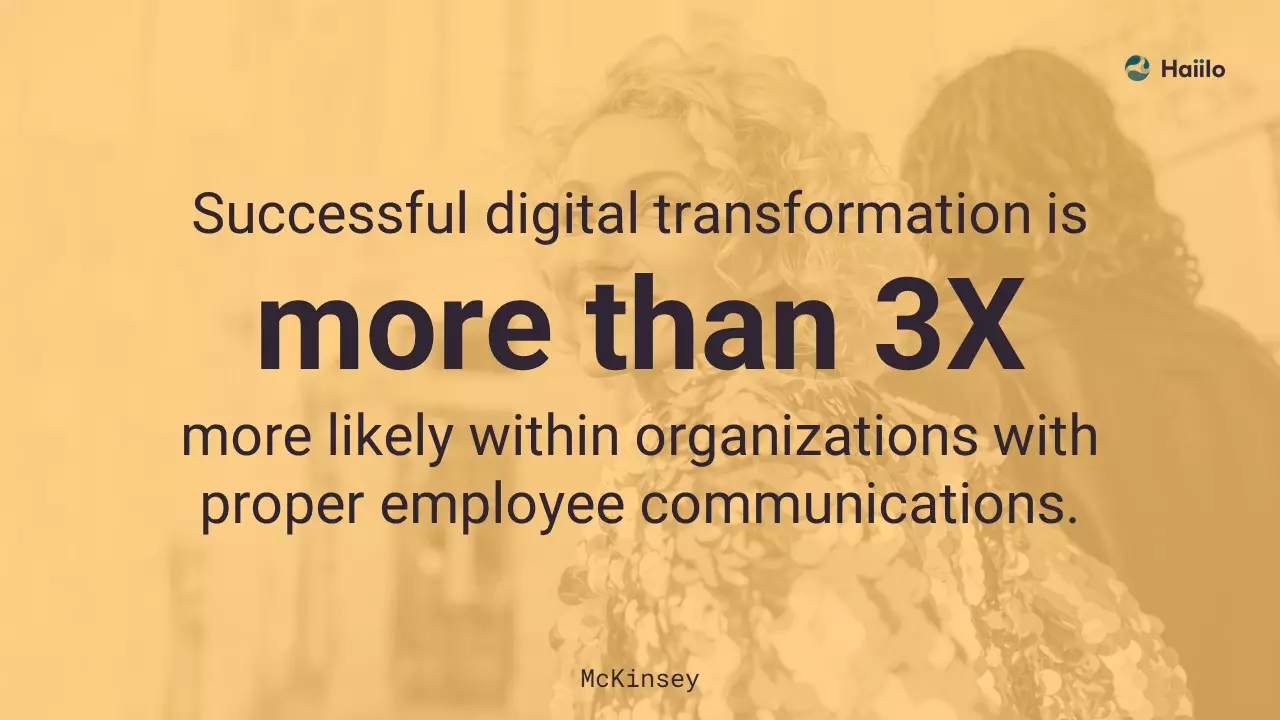
3. Increased importance of internal communication
When it comes to the future of work, the way employees communicate has always been an important topic. This is even more relevant now when we have switched to remote work.
Organizations have become aware of the importance of internal communications in keeping employees safe, productive and motivated to do their jobs successfully. Therefore, IC experts are now considered as some of the most important strategic business partners.
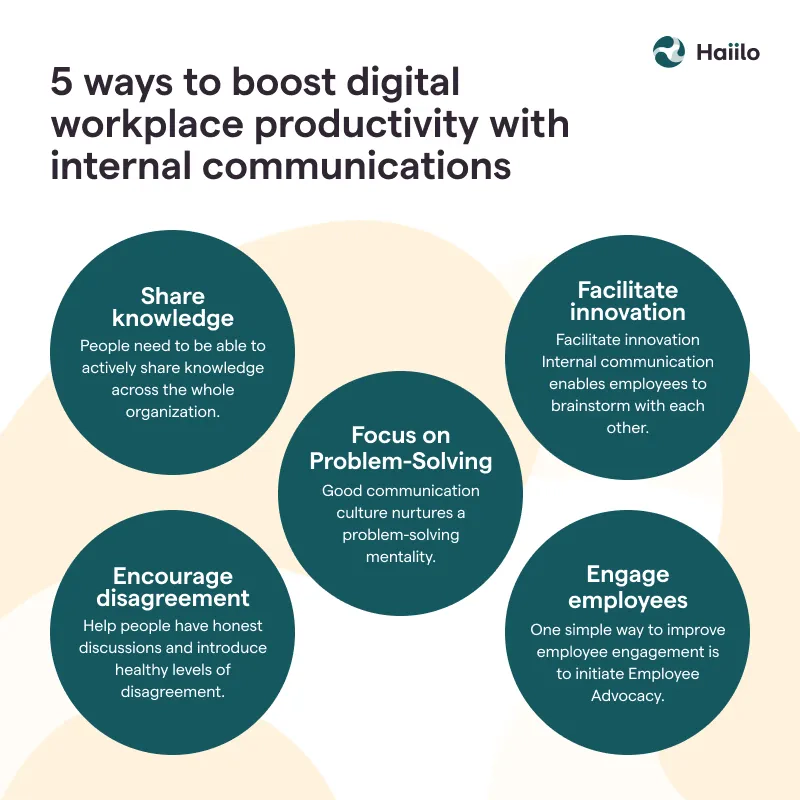
Being able to deliver relevant information to the right employee at the right time has become a must. Having a way to notify employees about the important updates in real time is an absolute necessity. Ensuring that employees have a way to stay connected with each other no matter where they are located is now one of employers’ main priorities.
Creating a centralized place where employees can access all the important messages, communications, updates and documents is the only way to ensure that employees never miss on important company updates and don’t lose their time on unnecessary tasks.
Employees expect to find the information they are interested in in their favorite social media channels, and the same goes for communications in the workplace. They want information to find them, and not the other way around. While this may have been considered as the future way of working, this is now the reality!
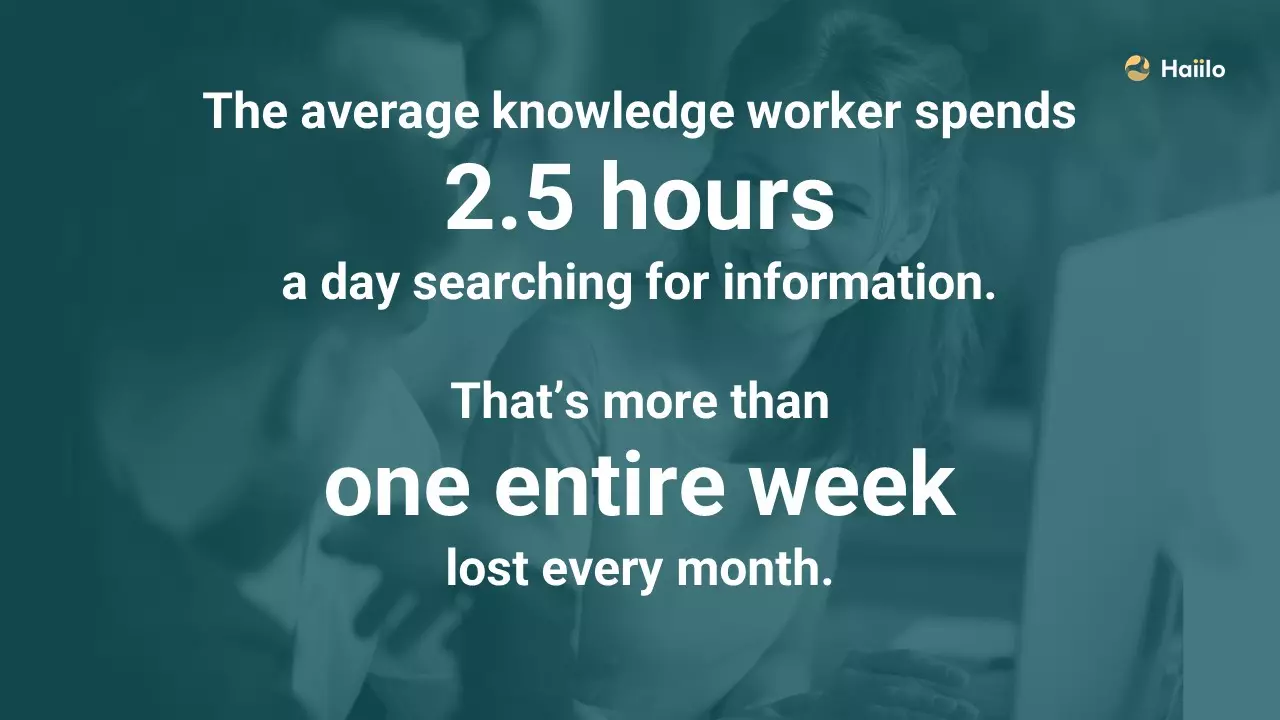
4. The changing role of leadership
Earlier, not many organizations may have considered leadership as an important topic of the future of work. We were mostly focused on how AI and other technology will replace some human jobs. Now however, we can see that the role of leadership in creating healthier workplaces is extremely important.
During the past few months, we have listened and read a lot about the importance of leadership in challenging times. As leaders play a key role in building trust in the workplace and aligning employees with the business goals, their role has become extremely important during these unprecedented times.
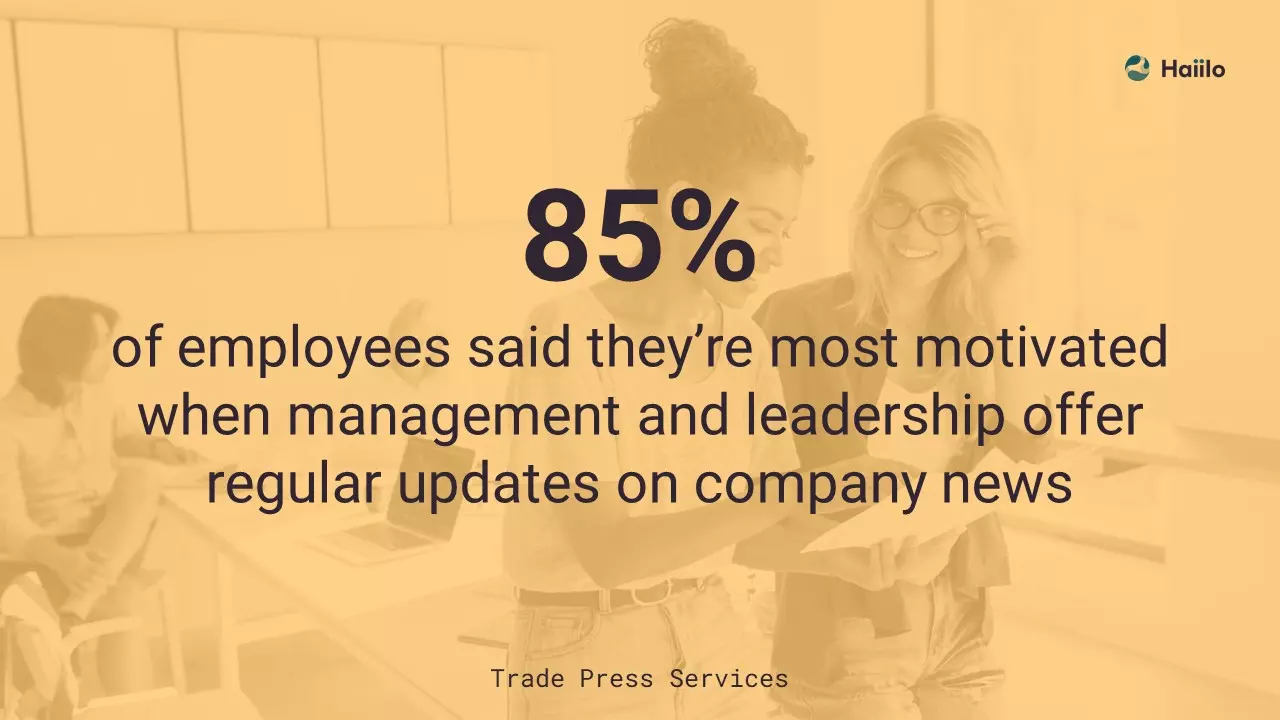
Therefore, we are expecting to see companies reaffirm the need for strong leadership in order to mitigate the consequences of this pandemic and future threats. A great leader, through open, transparent and authentic communication, can help employees and other stakeholders get through though times such as crises.
Organizations that have realized the importance of leadership communication have also managed to better adapt to the future of work.
5. The emergence of social collaboration
Social collaboration is now more important than ever. Employees want to stay connected, they expect complete transparency. They want to be able to engage in daily two-way company conversations, they want to be heard and share their own ideas with others.
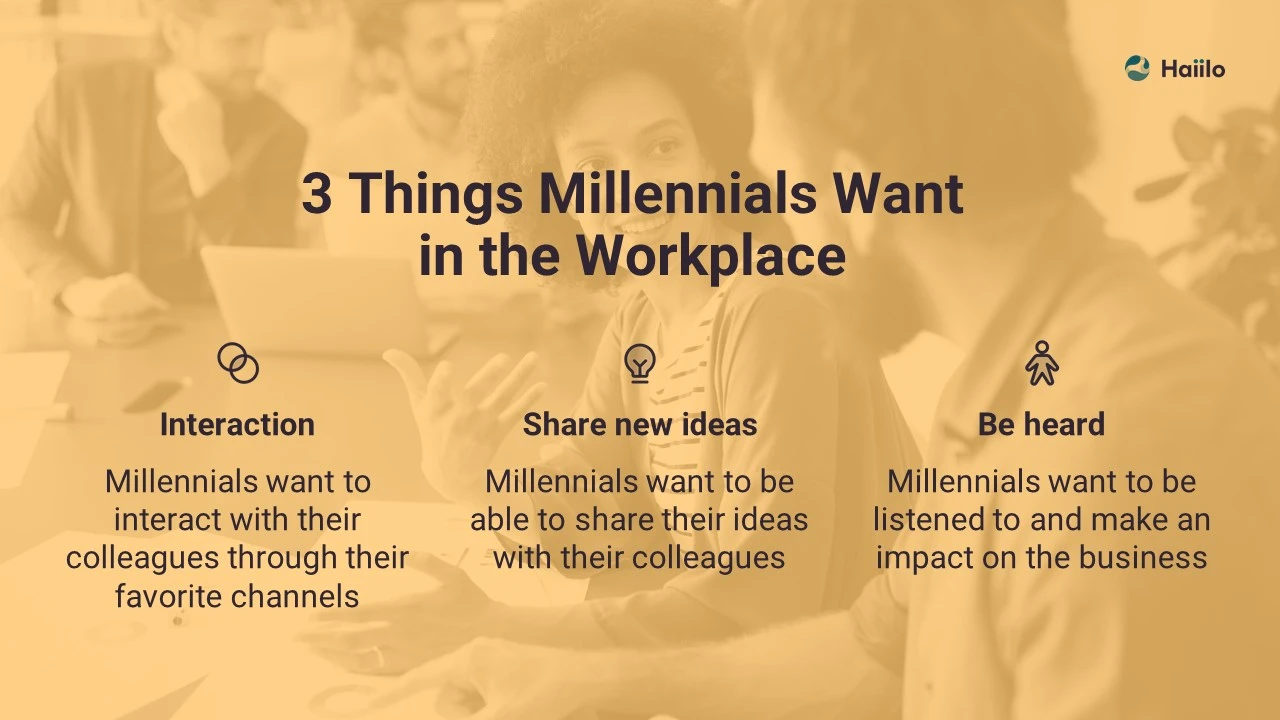
Now, when we are socially distanced, the need for social collaboration tools in the workplaces has increased drastically.
The interaction among employees from all the departments need to be seamless, intuitive and easy. Otherwise, your employees may feel disconnected, isolated and, therefore, be less motivated and engaged at work.
6. Reskilling and knowledge sharing
According to Forbes, today’s enterprise applications can get us to a predictive accuracy of 80% or more. We, as human beings, need to take care of the remaining 20% and cover “the last mile” — the actual decision.
Therefore, it will be very important for humans to work alongside machines, adding empathy, creative problem-solving and judgment to AI’s outputs. This is why business leaders need to start evolving job functions and reskilling employees to prepare them for the future of work.
However, a research shows that there is still considerable work to be done regarding reskilling in the organizations. The study highlights that 53% of senior executives say that their companies offer reskilling programs for workers. However, only 35% of employees report such options are available within their organizations.
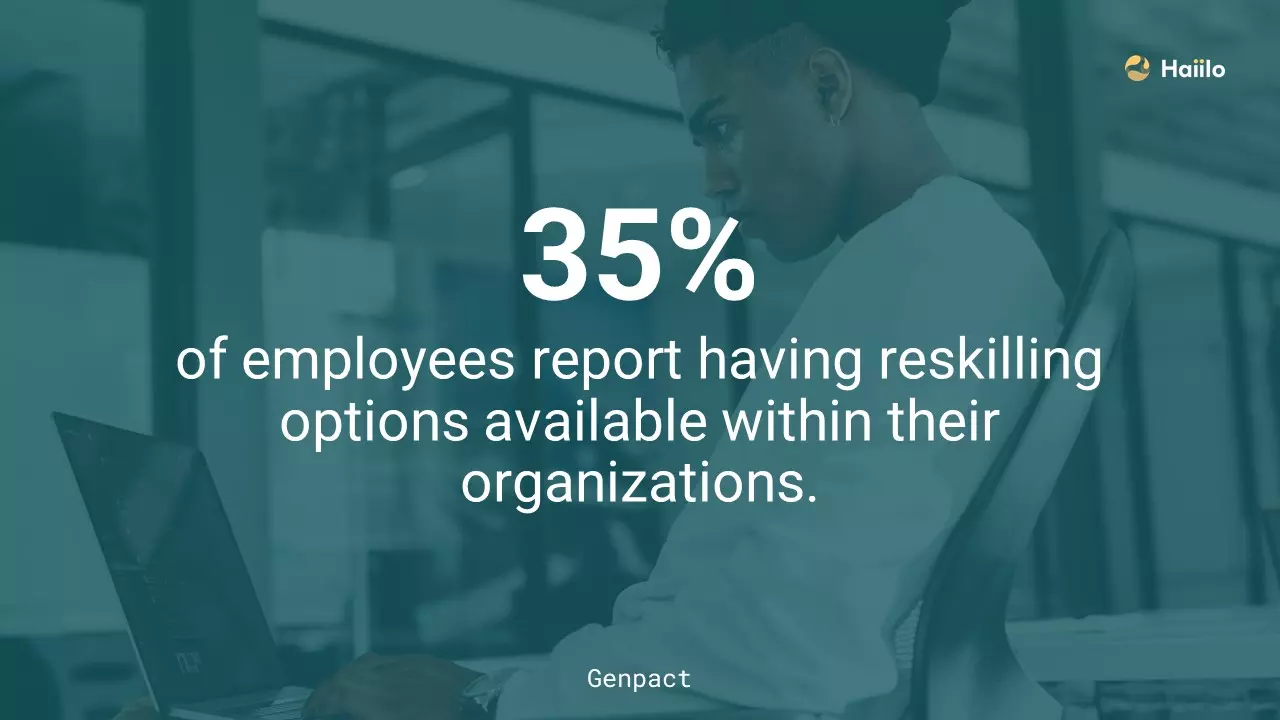
With such reskilling programs, it is very important that employees have the ability, through open communication, to easily share knowledge with their peers. The result is more collaborative and successful. After all, employees learn better from peers who can contextualize learning to their daily work.
7. The centralization of communication channels
Business communication has evolved immensely over the past few years. New technologies have been introduced, and they have completely revolutionized business communication. Instant messaging, chat apps, video conference software, intranets, document sharing and others have swooped in, making communication fast and efficient.
However, while technology has driven business communication effectively, it does come with its own challenges.
Although these modern forms of communication can boost efficiency, the communication ecosystem in the workplaces is becoming so complex that it may become counterproductive.
The massive availability of various communication channels may cause confusion among employees and lower their productivity as they are using many different communication apps.
This is driving the need for a more streamlined and centralized means of communication. Meaning, employers should choose internal communication software solutions that consolidate various communication channels.
📹 Channel consolidation plays a critical role in fighting communication challenges in the workplace. Check out our masterclass to learn about other ways to eliminate communication barriers.
8. Mobile-friendly workplaces
Take, for example, retail and healthcare industries. At the very beginning of this pandemic, employers in those industries were unable to instantly notify their deskless employees about the critical news and company updates, knowing that their employees’ health was at risk.
For that reason, creating mobile-friendly workplaces is not considered the future of work any more, it is the present of work. It is the new normal.
Today, most organizations, especially the ones that have deskless employees, know that supporting mobile-friendly workplaces is the only way to ensure their employees’ safety and productivity.
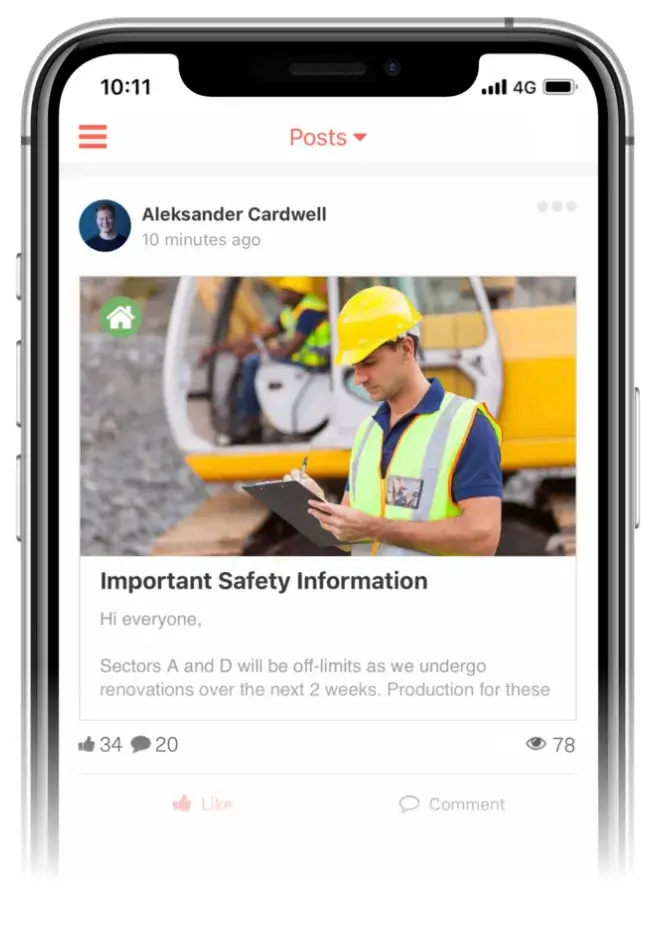
9. Employee morale and wellbeing are at the forefront
On a scale of “never,” “rarely,” “sometimes” and “often,” nearly one in four employees said they are now “often” feeling down, depressed or hopeless, SHRM research shows. As these results are worrying employers across the world, topics around employee morale and wellbeing have now surpassed those related to motivation, engagement and productivity.
Furthermore, nearly half of workers say that their workplace has a negative impact on their overall mental health. Because of the epidemic we are experiencing, organizations are trying to find ways to introduce new employee wellbeing initiatives in their workplaces. This trend is something that not many people have expected to become as one of the most important future of work trends.
10. It’s all about the meaning of work
A study by PwC found that 79% of leaders think that purpose is central to business success and Gallup found that 41% of employees want to know what a company stands for.
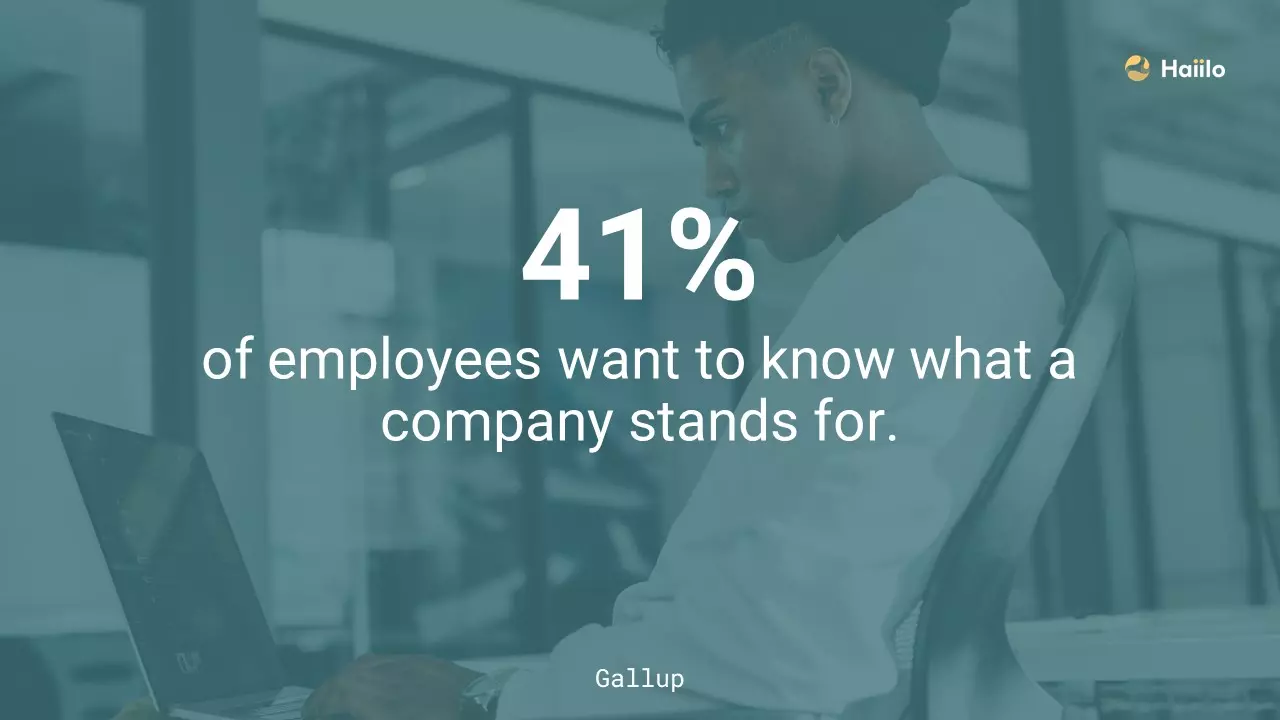
Employees are driven by a sense of shared purpose, which means that they need to have a strong sense of their part in the ‘bigger picture’ to bring their best results to the workplace.
Employees want to be a part of something bigger. They want to contribute to the world and be the ones who are changing it. This is especially true among Gen Z employees to whom the meaning of work is at the top of their career and job preferences.
However, it is sad to see that many employees still don’t know what their organization stands for, and they don’t understand how their own work contributes to the company’s success. Many of them are not aware of various corporate and social responsibility actions that their organization takes.
This needs to change, and the roles of leadership and internal communications are crucial here. They are the ones that should continuously remind their employees about the meaningful company initiatives as well as about the importance of their employees’ contributions.
11. Hard skills vs. soft skills
It is estimated by McKinsey that only 5% of jobs could be completely automated by technology. Therefore, it is believed that, in the future, workers will spend more time on activities that machines are not capable of, such as managing people, applying expertise, and communicating with others.
Thanks to technology, humans will spend less time on predictable, repetitive and physical activities as well as on collecting and processing data.
This is why we are already seeing a big shift in the need for different people skills. Social and emotional skills and more advanced cognitive capabilities, such as logical reasoning and creativity are in more demand than ever before.
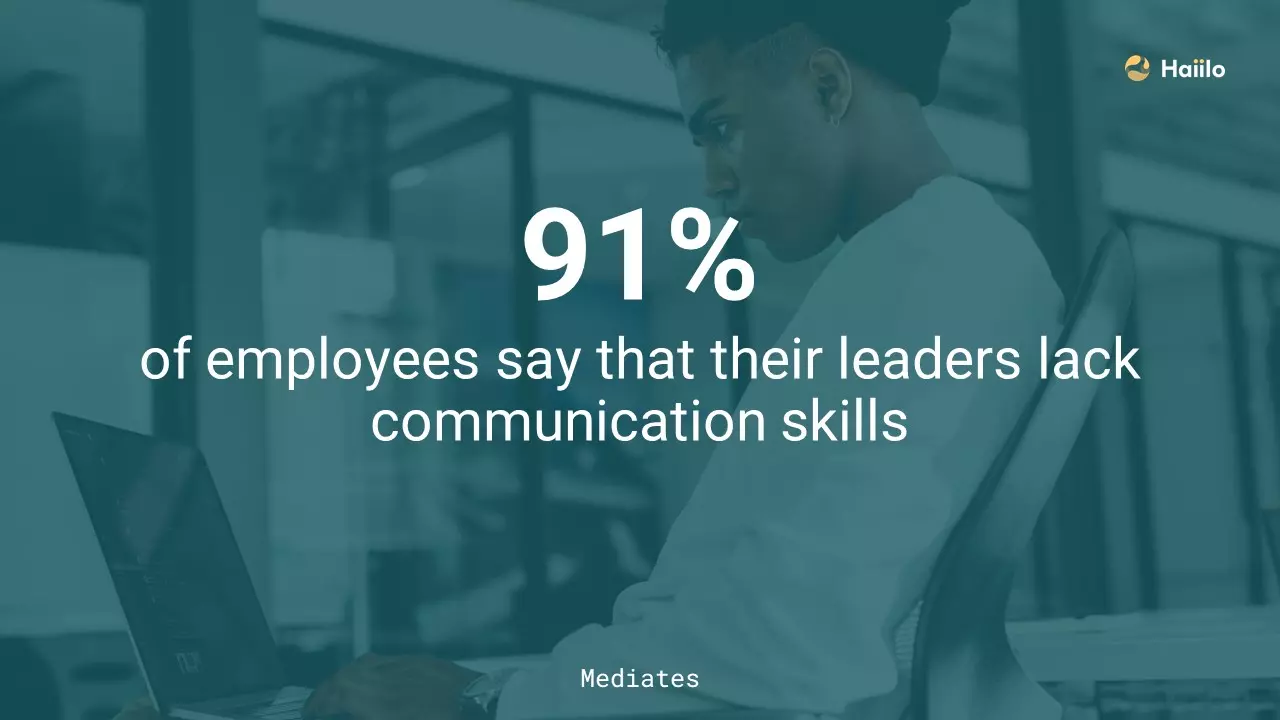
12. Self-employment and gig economy or job safety
We all know that the growth of the gig economy has resulted in an increase in self-employment which has been reshaping the future of work.
We are in 2022. So what is the current situation?
The work carried out by contingent workers was mostly associated with substantially less job security as well as the ability for a great flexibility allowing workers to take control of their work-life balance.
What are we seeing today? Employers are introducing much more flexible working conditions, and job security is becoming one of the biggest traits an employer can offer. So let’s see how the gig economy continues to develop.
13. Constant change management, agility and innovation
Crises such as COVID-19 required companies to be more agile and innovative in order to be able to rapidly adapt to the changing working environments. We used to say that the future of work will be much more agile. Well, it is.
Not being able to adapt to change quickly and make fast decisions may seriously hurt your organization’ and employees’ productivity. Moreover, in order to be more agile, many employers have also started giving more empowerment to their employees hoping to drive the sense of entrepreneurship.
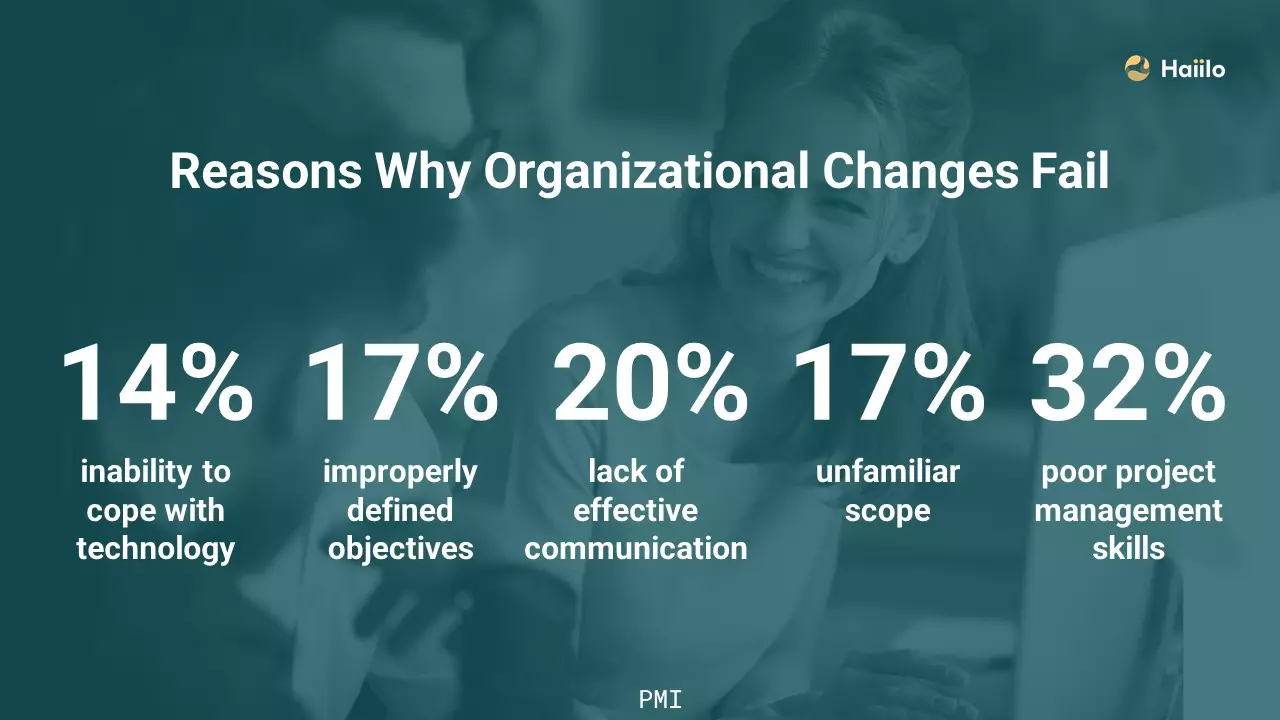
In order to be more agile, organizations need to rethink their internal communications and change management strategies.
Becoming an agile organization can’t happen within companies where there is silos, misinformation or a lack of internal communication, nor in the organizations that don’t know how to drive change.
14. The rise of employee activism
Today, people don’t want to stay quiet but share their voice. For that reason, we can see the growing trend of employee activism, where employees are now coming together to rally and protest against their companies based on their political and social values.
38% of employees report having spoken up to support or criticize their employers’ actions over a controversial issue that affects society.

So, what can organizations do?
Employers need to understand that activists are extremely loud and that they have the power to seriously hurt or boost their organization’s reputation.
Organizations need to continuously work on building trust in the workplace, supporting transparency, encouraging employees to live by their core company values and, of course, aligning their internal and external communication efforts.
When you do this, you will be much more likely to have supportive activists who can become your most valuable brand ambassadors.
How to Prepare for the Future of Work?
There is no simple answer to this question. If there was, everyone would follow the same formula and be successful. What organizations need to understand, and should never neglect, is that the future of work is already here.
The most important thing for employers to remember is that creating and shaping positive employee experience is becoming a must-have. Organizations need to find ways to adapt to their employees’ needs and wants because employees are the ones that choose their employers.
When creating such a people-centric culture, have these tips on your mind:
- Create a culture of transparency and open communication
- Make work more meaningful for your employees
- Enable employees’ success, growth and career development
- Implement technologies that enable employees to stay connected and productive
- Create a reskilling and knowledge sharing plan within your organization
- Encourage leaders to build strong connections with their teams
- Focus on your employees’ wellbeing
- Make your workplace more flexible and be more agile
If you manage to achieve and implement those, you can call yourself prepared for the future of work.










